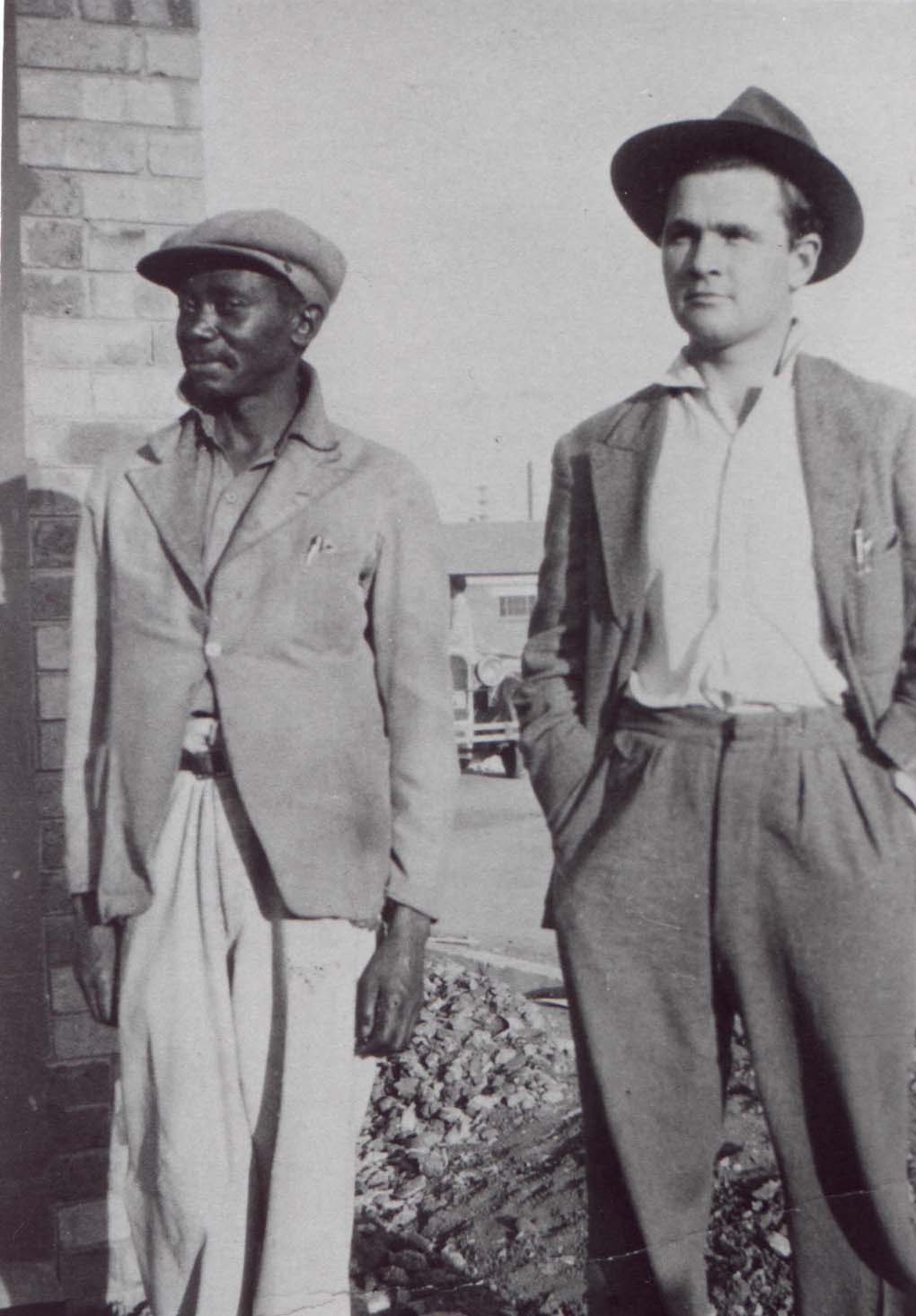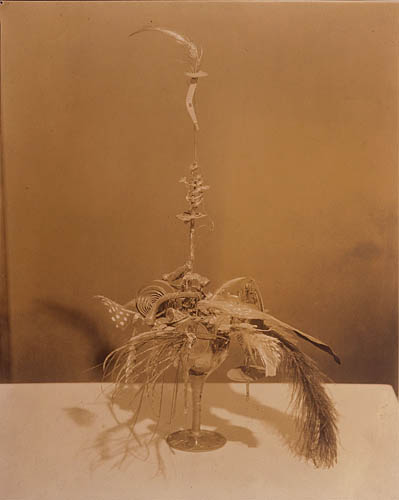Janusz Grabianski, 50's
Wednesday, November 21, 2007
Tuesday, November 20, 2007
On Myth
WRITERS don’t make up myths; they take them over and recast them. Even Homer was telling stories that his audience already knew. If some individuals present weren’t acquainted with Odysseus’s wanderings or the Trojan War, and were listening in for the first time (as I was when a child, enthralled by the gods and goddesses in H.A. Guerber’s classic retelling), they were still aware that this was a common inheritance that belonged to everyone. Its single author – if Homer was one at all – acted as a conduit of collective knowledge, picking up the thread and telling it anew.
In an inspired essay on ‘The Translators of The Arabian Nights’, Jorge Luis Borges praises the murmuring exchanges of writers across time and cultures, and points out that the more literature talks to other literatures, and reweaves the figures in the carpet, the richer languages and expression, metaphors and stories become. Borges wasn’t a believer in anything – not even magic – but he couldn’t do without the fantastic and the mythological. He compiled a wonderfully quixotic and useful bestiary, The Book of Imaginary Beings, to include the fauna of world literature: chimeras and dragons, mermaids and the head-lolling catoblepas whose misfortune is to scorch the earth on which he tries to graze with his pestilential breath. But Borges also included some of his own inventions – The Creatures who Live in Mirrors, for example, a marvelous twist on the idea of the ghostly double.
Borges liked myth because he believed in the principle of ‘reasoned imagination’: that knowing old stories, and retrieving and reworking them, brought about illumination in a different way from rational inquiry. Myths aren’t lies or delusions: as Hippolyta the Amazon queen responds to Theseus’ disparaging remarks about enchantment: ‘But all the story of the night told o’er, / And all their minds transfigured so together, / More witnesseth than fancy’s images / And grows to something of great constancy’ (A Midsummer Night’s Dream, V.i.24-7). One of Borges’s famous stories, ‘The Circular Ruins’, unfolds a pitch-perfect fable of riddling existence in the twentieth century: a magician dreams a child into being, and then discovers, as he walks unscathed through fire in the closing lines of the tale, that he himself has been dreamed.
Borges here annexed and revisioned accounts of shamanic trance voyaging that had been noted down in the depths of the Siberian winter wastelands and transmitted by ethnographers to the great Parisian school of scholars of the sacred (Georges Dumézil, Marcel Mauss, Marcel Granet). Borges translates his protagonist to a ruined temple in a South American jungle, thus grafting the shamans from Siberia onto closer, Latin American Indian counterparts who also held that men and women could metamorphose in their sleep and travel out of their bodies and out of time. Myths are not only held in common; they connect disparate communities over great distances through our common fabulist mental powers – what Henri Bergson called the ‘fonction fabulatrice’: the myth-making faculty.
The word ‘myth’ is usually used to evoke a dead religion (the Greeks’ Olympians, the Norse pantheon) but it’s also applied rather heedlessly to the sacred stories of peoples who are still unconsciously counted as primitive, and therefore somehow unadulteratedly ancient (the Sanskrit epics of the Hindus, Australian aborigines’ tales, Brazilian Indians’ myths). Both Jung and Freud’s diagnostic uses of myth make this assumption – that pure, pre-historical human tendencies, drives and fears, will be detectable through myths. For Freud, the savage story of Zeus castrating and deposing Kronos to become ruler of Olympus illuminated the conflict that besets all fathers and sons in historical time. The way Freud told and retold this story has become so entrenched that few people still know that the same myth also relates how Kronos’s own father Ouranos was deposed without any bloodshed – he went glumly, cast out of heaven by his son as a punishment for exceeding his authority. In the months following Brown’s coming into his own after Blair’s stuttering abdication, the Greek story again demonstrates myth’s inexhaustible illuminating powers. As the Roman poet Sallust wrote about such tales: “These things never happened but are always”. The question is only which story to pick.
“Myths are definitely not guardrails, set up at each dangerous curve to prolong the life of the individual or of the human species”, wrote Roger Caillois, a friend of Borges. Yet very occasionally, a writer like Mary Shelley seizes upon a story and issues a warning that spreads from the page to the world almost instantly. Her Dr. Frankenstein takes up on the myth of Faust, himself a figure of human presumption from the lineage of Prometheus and Lucifer and other rebels against gods and the limits they impose. But in a brilliant innovation of compassionate thinking, Shelley focused instead on the Creature, and her Creature – especially through the pathos of Boris Karloff’s’ filmic incarnation – has migrated into ever more popular festivities and rituals (fancy dress parties, horror video sleepovers, Hallowe’en), as well as into dozens of nightmares about genetic engineering. But if Frankenstein’s Creature embodied for the early Romantics the victims of unchained rational science, what myth could be re-awakened and re-cast as a warning by reasoning imaginations today?
It seems to me that Erichsychthon makes a strong candidate in the world of eco-disaster: he’s the tycoon in Ovid who cuts down a whole forest even after he has been warned of the consequences, and is then cursed by the outraged goddess of nature with unappeasable hunger; he ends up selling his daughter for food, and when that no longer works, consuming himself bite by bite.
Other myths of our time could be the wanderers and fugitives – Io chased from country to country; Leto forbidden from resting anywhere to give birth to her children; Aeneas leaving Troy in burning ruins with his father on his back, like Dido leaving Tyre, both of them fleeing westwards.
Last year, the most recently discovered planet, ‘2003-UB313’, was renamed Eris after the Goddess of Strife, whose actions catalyse the Trojan War. The matter of Troy never goes away. However, it turns out that astronomers weren’t inspired to this choice by the state of the world, but by the state of their profession. In a spirit of resistance to Eris’s planetary hold, I hope another body is orbiting into view, dreamed up by a fabulist’s reasoned imagination and bringing with it new creatures out of the mirror of myth.
Marina Warner
www.theliberal.co.uk
In an inspired essay on ‘The Translators of The Arabian Nights’, Jorge Luis Borges praises the murmuring exchanges of writers across time and cultures, and points out that the more literature talks to other literatures, and reweaves the figures in the carpet, the richer languages and expression, metaphors and stories become. Borges wasn’t a believer in anything – not even magic – but he couldn’t do without the fantastic and the mythological. He compiled a wonderfully quixotic and useful bestiary, The Book of Imaginary Beings, to include the fauna of world literature: chimeras and dragons, mermaids and the head-lolling catoblepas whose misfortune is to scorch the earth on which he tries to graze with his pestilential breath. But Borges also included some of his own inventions – The Creatures who Live in Mirrors, for example, a marvelous twist on the idea of the ghostly double.
Borges liked myth because he believed in the principle of ‘reasoned imagination’: that knowing old stories, and retrieving and reworking them, brought about illumination in a different way from rational inquiry. Myths aren’t lies or delusions: as Hippolyta the Amazon queen responds to Theseus’ disparaging remarks about enchantment: ‘But all the story of the night told o’er, / And all their minds transfigured so together, / More witnesseth than fancy’s images / And grows to something of great constancy’ (A Midsummer Night’s Dream, V.i.24-7). One of Borges’s famous stories, ‘The Circular Ruins’, unfolds a pitch-perfect fable of riddling existence in the twentieth century: a magician dreams a child into being, and then discovers, as he walks unscathed through fire in the closing lines of the tale, that he himself has been dreamed.
Borges here annexed and revisioned accounts of shamanic trance voyaging that had been noted down in the depths of the Siberian winter wastelands and transmitted by ethnographers to the great Parisian school of scholars of the sacred (Georges Dumézil, Marcel Mauss, Marcel Granet). Borges translates his protagonist to a ruined temple in a South American jungle, thus grafting the shamans from Siberia onto closer, Latin American Indian counterparts who also held that men and women could metamorphose in their sleep and travel out of their bodies and out of time. Myths are not only held in common; they connect disparate communities over great distances through our common fabulist mental powers – what Henri Bergson called the ‘fonction fabulatrice’: the myth-making faculty.
The word ‘myth’ is usually used to evoke a dead religion (the Greeks’ Olympians, the Norse pantheon) but it’s also applied rather heedlessly to the sacred stories of peoples who are still unconsciously counted as primitive, and therefore somehow unadulteratedly ancient (the Sanskrit epics of the Hindus, Australian aborigines’ tales, Brazilian Indians’ myths). Both Jung and Freud’s diagnostic uses of myth make this assumption – that pure, pre-historical human tendencies, drives and fears, will be detectable through myths. For Freud, the savage story of Zeus castrating and deposing Kronos to become ruler of Olympus illuminated the conflict that besets all fathers and sons in historical time. The way Freud told and retold this story has become so entrenched that few people still know that the same myth also relates how Kronos’s own father Ouranos was deposed without any bloodshed – he went glumly, cast out of heaven by his son as a punishment for exceeding his authority. In the months following Brown’s coming into his own after Blair’s stuttering abdication, the Greek story again demonstrates myth’s inexhaustible illuminating powers. As the Roman poet Sallust wrote about such tales: “These things never happened but are always”. The question is only which story to pick.
“Myths are definitely not guardrails, set up at each dangerous curve to prolong the life of the individual or of the human species”, wrote Roger Caillois, a friend of Borges. Yet very occasionally, a writer like Mary Shelley seizes upon a story and issues a warning that spreads from the page to the world almost instantly. Her Dr. Frankenstein takes up on the myth of Faust, himself a figure of human presumption from the lineage of Prometheus and Lucifer and other rebels against gods and the limits they impose. But in a brilliant innovation of compassionate thinking, Shelley focused instead on the Creature, and her Creature – especially through the pathos of Boris Karloff’s’ filmic incarnation – has migrated into ever more popular festivities and rituals (fancy dress parties, horror video sleepovers, Hallowe’en), as well as into dozens of nightmares about genetic engineering. But if Frankenstein’s Creature embodied for the early Romantics the victims of unchained rational science, what myth could be re-awakened and re-cast as a warning by reasoning imaginations today?
It seems to me that Erichsychthon makes a strong candidate in the world of eco-disaster: he’s the tycoon in Ovid who cuts down a whole forest even after he has been warned of the consequences, and is then cursed by the outraged goddess of nature with unappeasable hunger; he ends up selling his daughter for food, and when that no longer works, consuming himself bite by bite.
Other myths of our time could be the wanderers and fugitives – Io chased from country to country; Leto forbidden from resting anywhere to give birth to her children; Aeneas leaving Troy in burning ruins with his father on his back, like Dido leaving Tyre, both of them fleeing westwards.
Last year, the most recently discovered planet, ‘2003-UB313’, was renamed Eris after the Goddess of Strife, whose actions catalyse the Trojan War. The matter of Troy never goes away. However, it turns out that astronomers weren’t inspired to this choice by the state of the world, but by the state of their profession. In a spirit of resistance to Eris’s planetary hold, I hope another body is orbiting into view, dreamed up by a fabulist’s reasoned imagination and bringing with it new creatures out of the mirror of myth.
Marina Warner
www.theliberal.co.uk
The Baroness's Portrait of Marcel Duchamp
Labels:
crafts,
modernities,
Photography,
sculpture
Saturday, November 17, 2007
Vandalise Modernity
Labels:
design,
DIY,
furniture,
Greek Matters,
Mid-Century modern,
retrofuture
Tuesday, November 13, 2007
What is a House with Eameses' Furniture ?
Suits and cocktail dresses, luxury objects, a big car in the suburbs with a swimming pool and of course a house with designed chairs by Charles and Ray Eames.
Labels:
advertising,
California Modern,
comic strip,
design,
domesticity and modernism,
furniture,
Mid-Century modern,
modernism and individuality
She Remained Alone with the Star
Sunday, November 11, 2007
Fence Story
There once was a little boy who had a bad temper. His father gave him a bag of nails and told him that every time he lost his temper, he must hammer a nail into the back of the fence.
The first day the boy had driven six nails into the fence. Over the next few weeks, as he learned to control his anger, the number of nails hammered daily gradually dwindled. He discovered it was easier to hold his temper than to drive those nails into the fence.
Finally the day came when the boy didn't lose his temper at all. He told his father about it and the father suggested that the boy now pull out one nail for each day that he was able to hold his temper.
The days passed and the young boy was finally able to tell his father that all the nails were gone.
The father took his son by the hand and led him to the fence. He said, You have done well, my son, but look at the holes in the fence. The fence will never be the same. When you say things in anger, they leave a scar just like this one. You can put a knife in a man and draw it out. It won't matter how many times you say I'm sorry, the wound is still there. A verbal wound is as bad as a physical one.

110 cm Χ 35 cm Χ 30 cm
wood, acrylic
www.storybin.com
The first day the boy had driven six nails into the fence. Over the next few weeks, as he learned to control his anger, the number of nails hammered daily gradually dwindled. He discovered it was easier to hold his temper than to drive those nails into the fence.
Finally the day came when the boy didn't lose his temper at all. He told his father about it and the father suggested that the boy now pull out one nail for each day that he was able to hold his temper.
The days passed and the young boy was finally able to tell his father that all the nails were gone.
The father took his son by the hand and led him to the fence. He said, You have done well, my son, but look at the holes in the fence. The fence will never be the same. When you say things in anger, they leave a scar just like this one. You can put a knife in a man and draw it out. It won't matter how many times you say I'm sorry, the wound is still there. A verbal wound is as bad as a physical one.

110 cm Χ 35 cm Χ 30 cm
wood, acrylic
www.storybin.com
Saturday, November 10, 2007
The Pigeon Hole Parking
The Pigeon Hole Parking cares about your automobile, and feeds it with protection. It offers solution to the lack of parking facilities. Rochester, 60's
Wednesday, November 7, 2007
Karaoke Poetry Bar
Karaoke Poetry Bar is a real although temporary karaoke bar where pop songs on the stage monitor have been replaced by poems written by Greek poets who have emerged within the last 10 years. During recitation, the poems await to be challenged by the audacity and the intentions of the audience. Within the same space, video works by contemporary Greek artists will be presented in a video installation. The video works are documentations of performances in public spaces around Athens, where the artists explore ways of rendering/reciting poetry by established Greek poets of the 20th century,
In Karaoke Poetry Bar, the exposure of artists and visitors to the recitation of poetry is intended as a metaphor for the artistic act itself. Because to approach art is to abandon the safety of the plot, the expectation for “meaning” and, ultimately, the demand for function.
Concept, curating, and design of the installation: intothepill.net
Visual artists (video/performances)
Alexandros Avranas, Vangelis Artemis, Dimitris Christidis, Aikaterini Gegisian, Alexandros Georgiou+Mamali Shafahi, Nikos Giavropoulos, Yiannis Grigoriadis, Giorgos Gyparakis, George Drivas, Makis Faros, Yiannis Isidorou, Kostas Ioannidis, Katerina Kana, Georgia Kotretsos+Paul Zografakis,
Yiannis Koufopoulos, Nina Kotamanidou, Tassos Langis, Vassiliki Lefkaditi, Ioanna Myrka, Lea Petrou, Lila Polenaki, Ioannis Savvidis, Yorgos Sapountzis, Andreas Sitorengo, Thanos Stathopoulos, Athena Stamati, Shifty Tongue, Vassiliea Stylianidou+Chryssa Tsampazi, Despoina Stokou, Yiannis Theodoropoulos, Lina Theodorou, Panagiota Tzamourani.
Poets / live performances at karaoke machine:
Vassilis Amanatidis, Dimitris Allos, Yiannis Antiochou, Iana Boukova, Giorgos Chantzis, Foivi Giannisi, Katerina Iliopoulou, Doukas Kapantais, Dimitra Kotoula, Patricia Kolaiti, Dimitris Leontzakos, Giorgos Lillis, Stamatis Polenakis, Efi Pirpasou, Vassilis Rouvalis, Yiannis Stigas, Maria Topali.
Subscribe to:
Posts (Atom)





